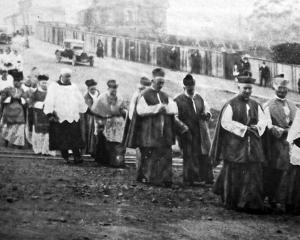Hard on the heels of the interim report of the Royal Commission into the Christchurch Earthquakes has come the opening of the public hearings into the same. There is no doubt the matters canvassed in the former are of great import - and will be especially so when the full reports are realised - but the public hearings also have their place on the road to recovery of a city and province badly scarred by the events of the last 13 months.
The Royal Commission, comprising Justice Mark Cooper, Sir Ronald Carter and Assistant Prof Richard Fenwick, was established to look into why some buildings failed extensively and why that failure in some cases caused considerable injury and death. It was to investigate how Christchurch land was affected by the earthquake, and the adequacy of current legal and best-practice requirements for design, construction and maintenance of city buildings in addressing earthquake risk.
It was not to determine any questions of liability nor encroach on matters for which the Minister for Canterbury Earthquake Recovery and the Christchurch Earthquake Recovery Authority itself are responsible such as the design, planning and options for the rebuilding of the Christchurch City CBD.
Its interim report was limited in scope because the public hearing into the matters arising out of the quake had then to begin and because investigations into specific building failures had not been completed. Nonetheless, the report did make certain far-reaching recommendations in respect of "some aspects of current building design and practice". In particular it recommended the urgent strengthening of about 3500 unreinforced masonry buildings (URMs) throughout the country.
The commission recommended local authorities throughout New Zealand compile or update registers of all unreinforced masonry buildings and that the buildings be improved "by bracing parapets, installing roof ties and securing external falling hazards in the vicinity of public spaces". This particular thrust of the report has attracted some controversy. In the first place it has been pointed out by Dunedin historian Peter Entwisle that while 42 people died as a result of the failure of URMs, 140 died in reinforced buildings.
Further, the cost of upgrading the URMs to a recommended 67% of present codes could be about $2 billion. But Mr Entwisle points out the figure of 3500 is almost certainly an underestimate and the costs also well short of reality. The corollary, of course, is that with such steep and costly requirements, many such buildings may become uneconomic and the pressure for demolition - with its adverse effects on heritage - will only increase.
Yesterday, the Dunedin City Council's planning and environment committee recommended the adoption of an updated Dangerous, Insanitary and Earthquake-prone Buildings Policy - which recommends upgrading to a more realistic 34% of present codes.
Building bylaws and codes, however, do little to nourish the soul and this is where the public hearing which began on Monday is expected to come into play: among other searching questions it will address, said Justice Cooper, is "the reason why people died". One counsel assisting the commission said the hearing would help Cantabrians gain a better understanding of the complex issues being addressed "so there can be more informed engagement".
A Ngai Tahu spokesman hoped the hearing would "bring order to the chaos" which had overtaken the city in the last nine months. And as a poignant reminder of the extent of the tragedy, the names of the 182 people killed during the February 22 earthquake were read out, followed by two minutes' silence.
The first witness, GNS natural hazards director Terry Webb, emphasised the need to understand the nature of the ground shaking experienced in Christchurch. The GNS data revealed extremely high levels of both horizontal and vertical shaking including massive vertical movements, over large parts of the city.
The commission will hear much more of such evidence until next March before reporting its findings. It may not provide all the answers to all the questions that continue to haunt those who lost loved ones, or homes or businesses in Christchurch, but it is a good start and ultimately will help the grieving and the healing.













